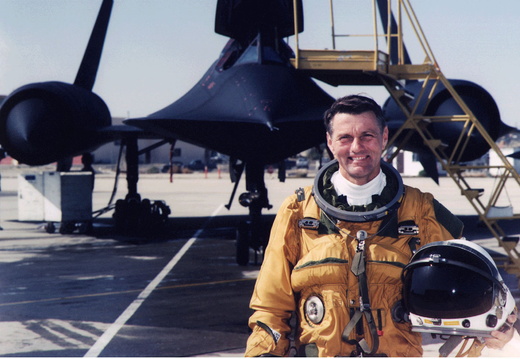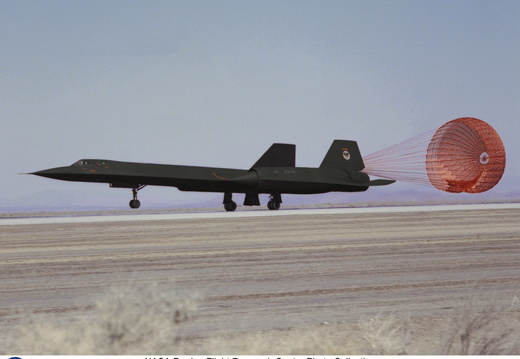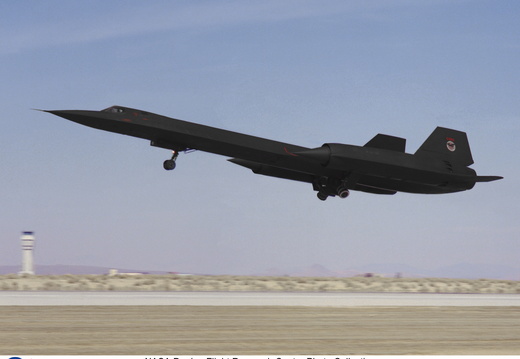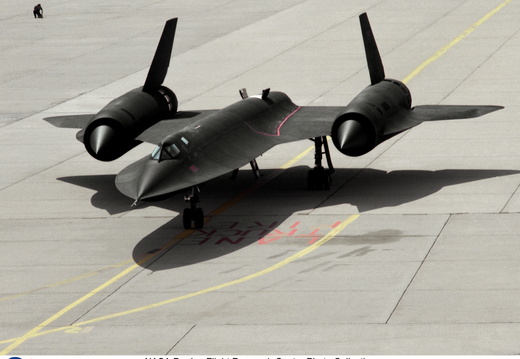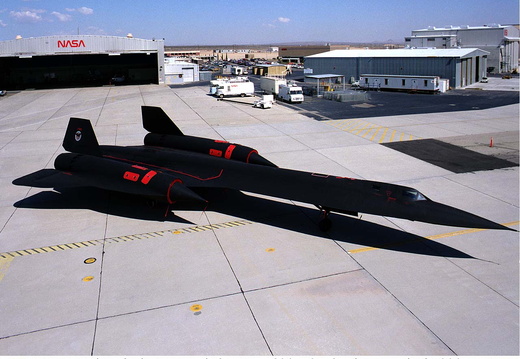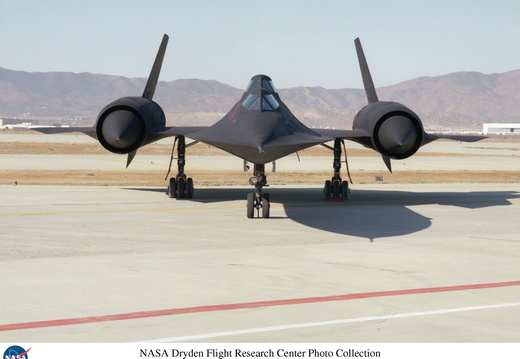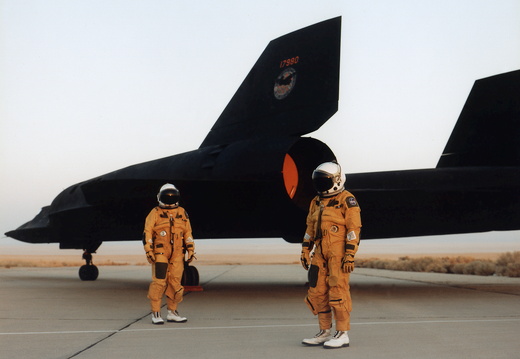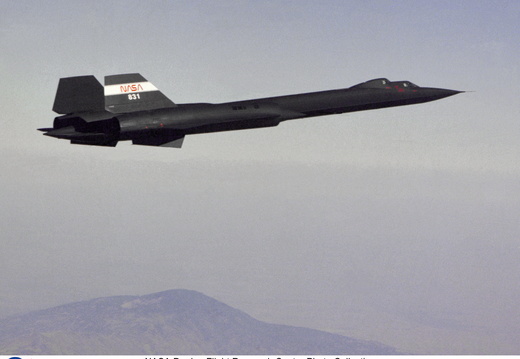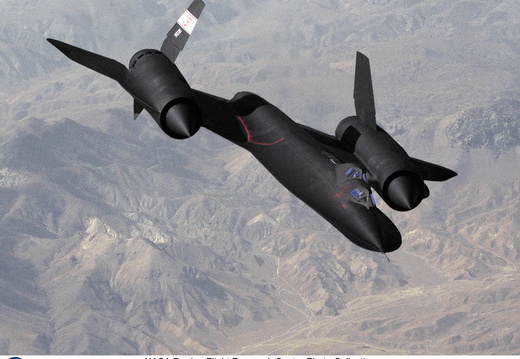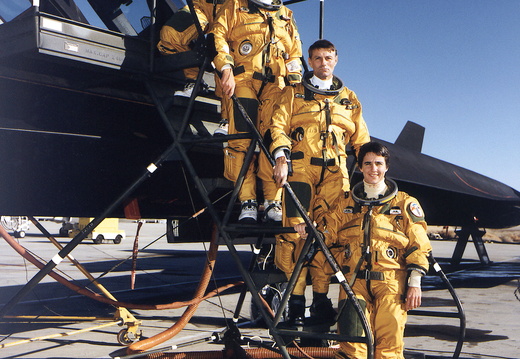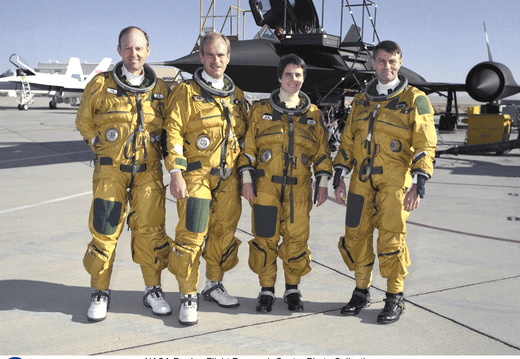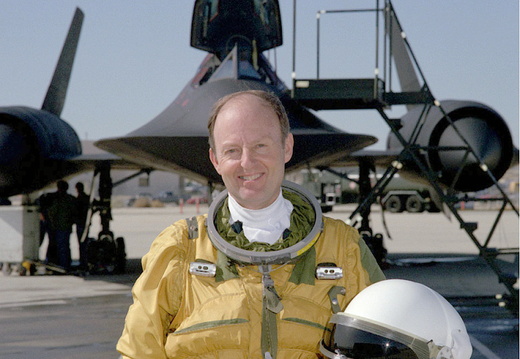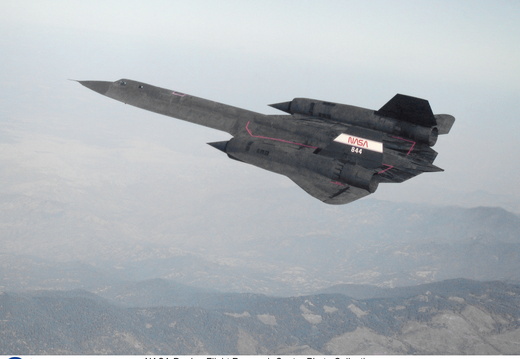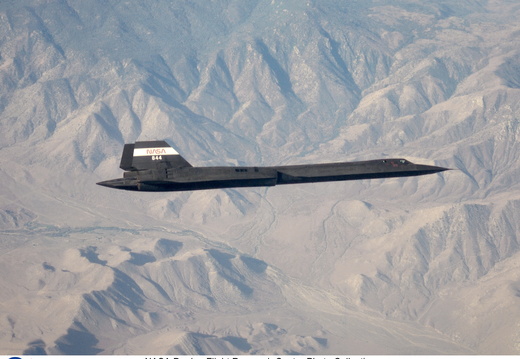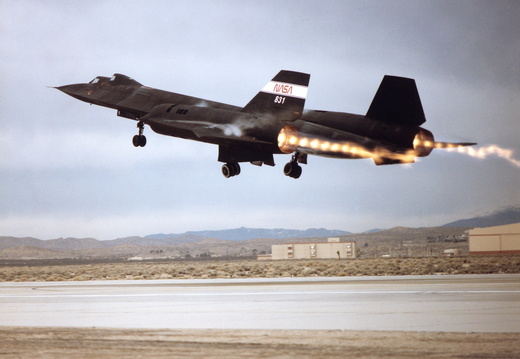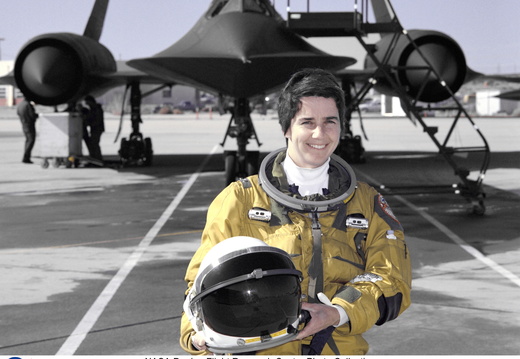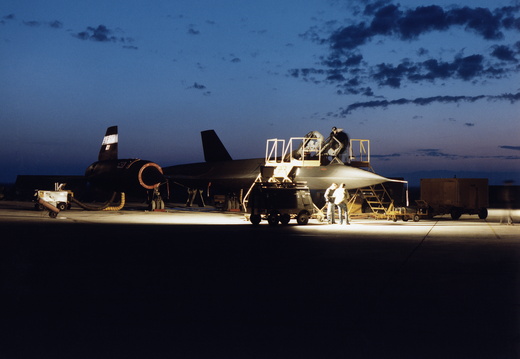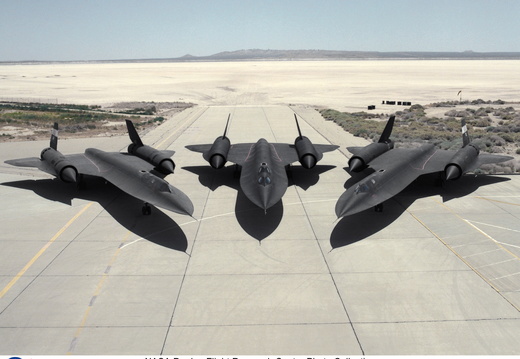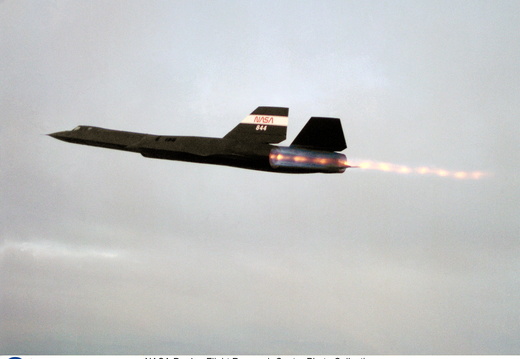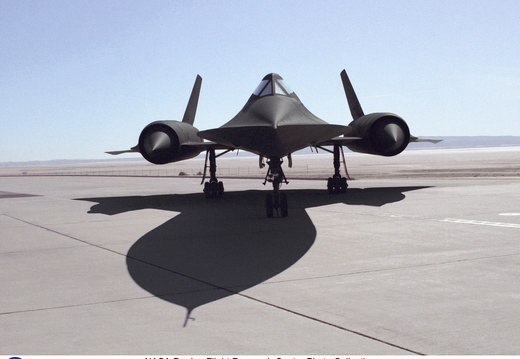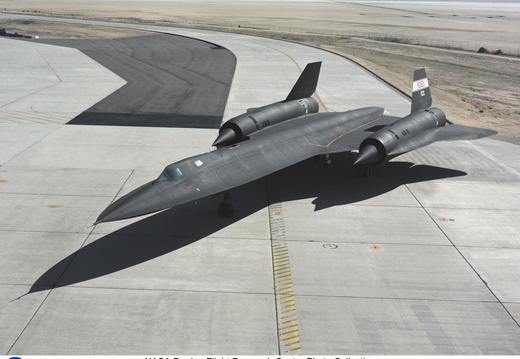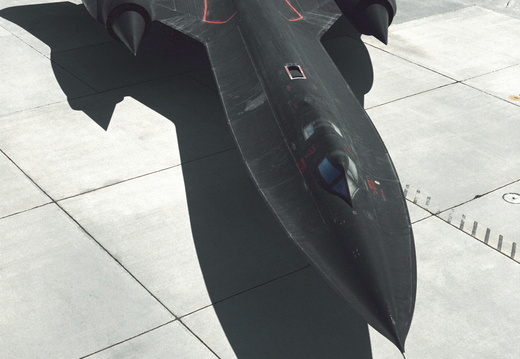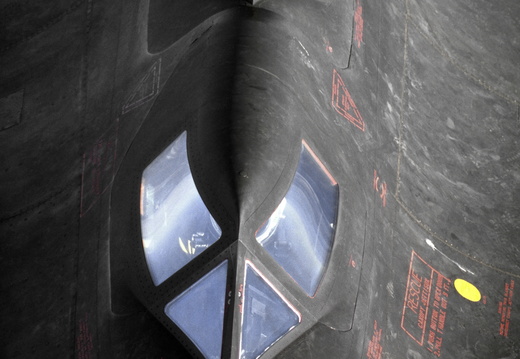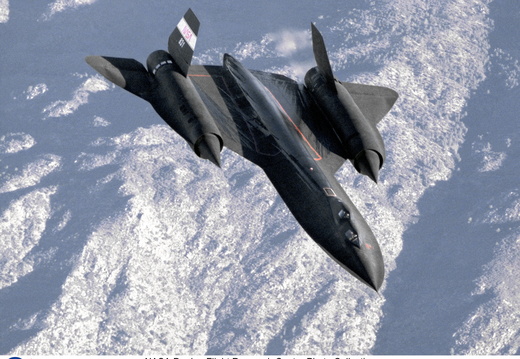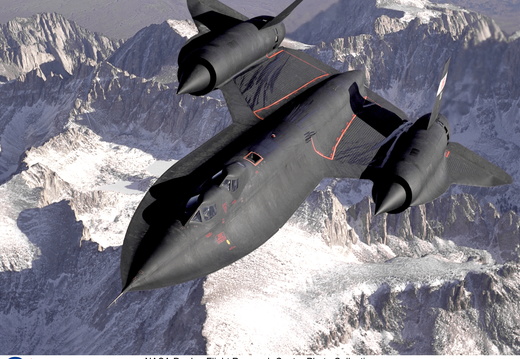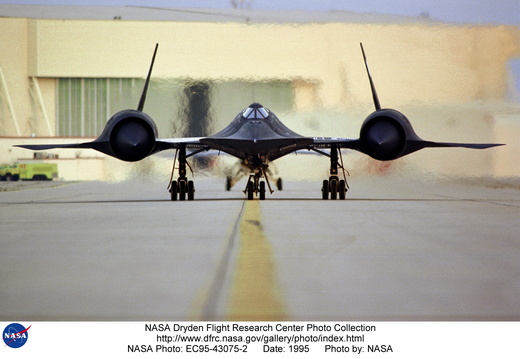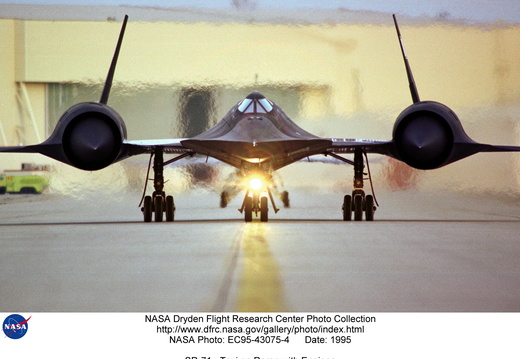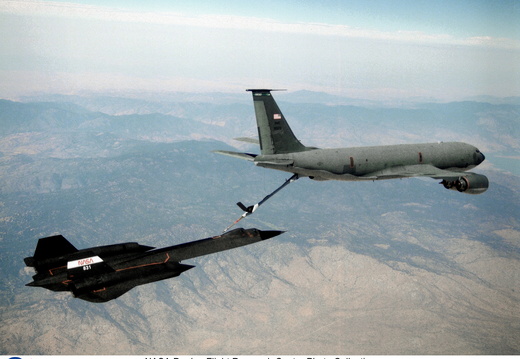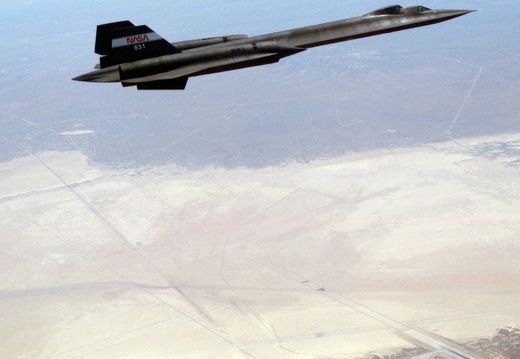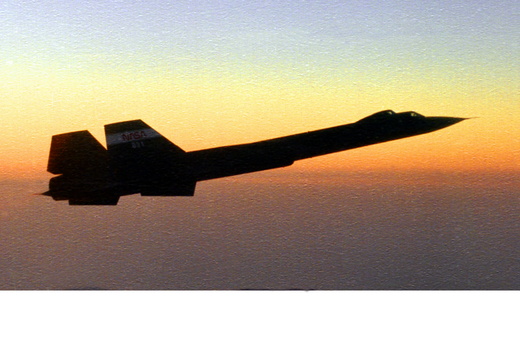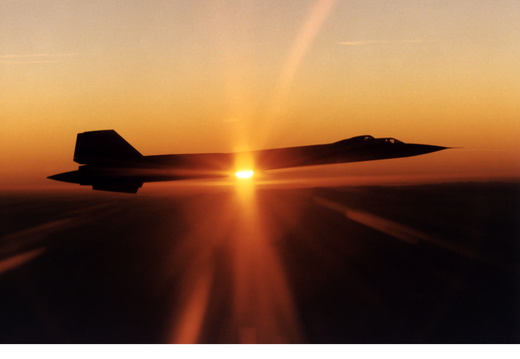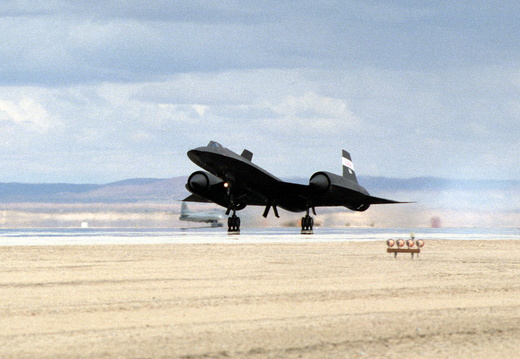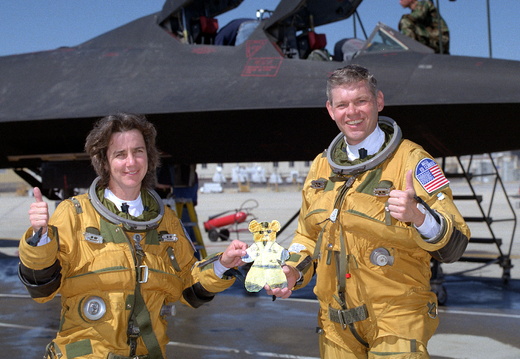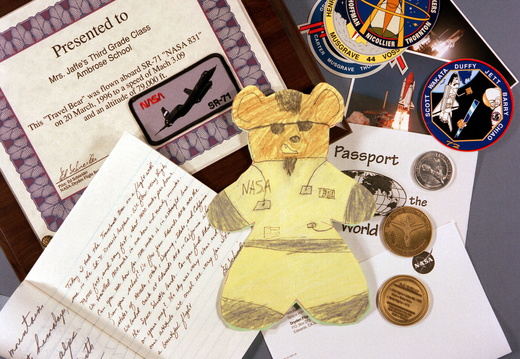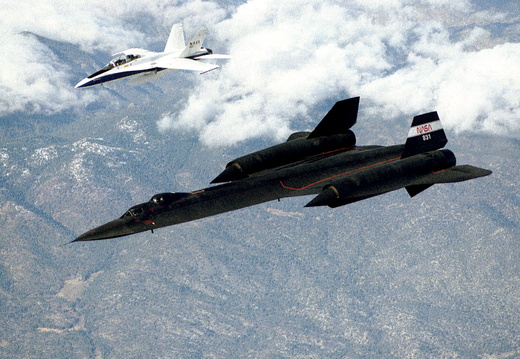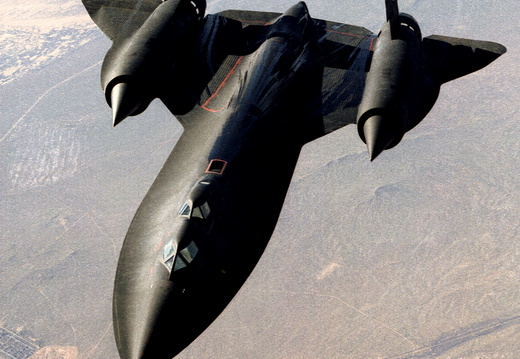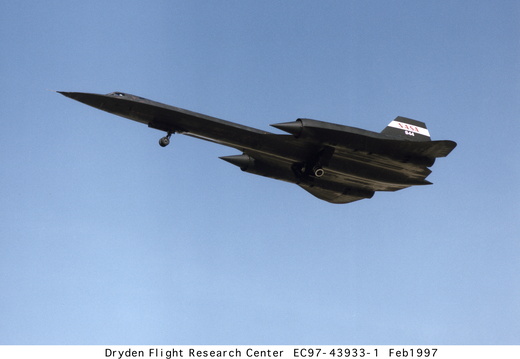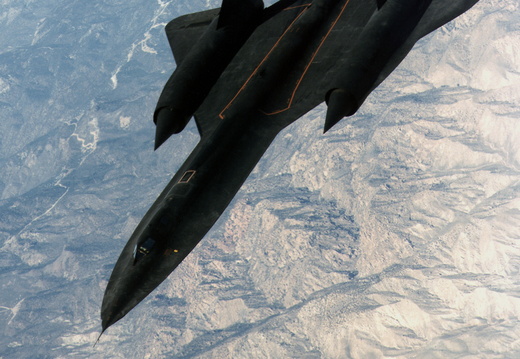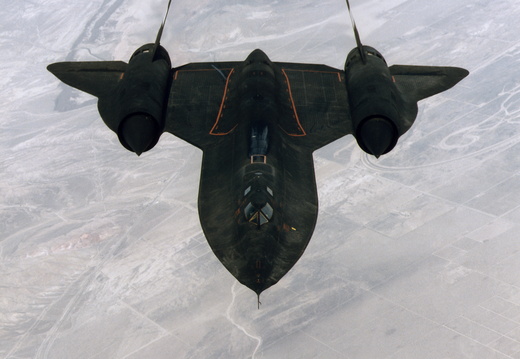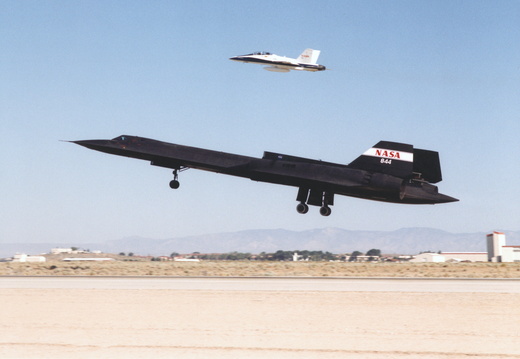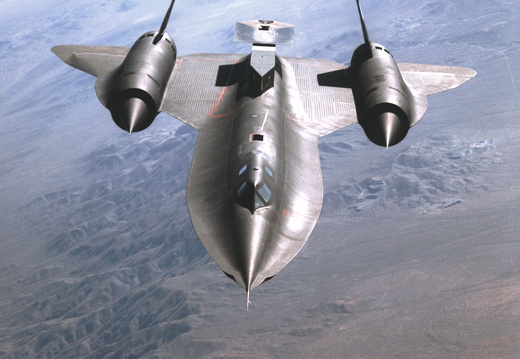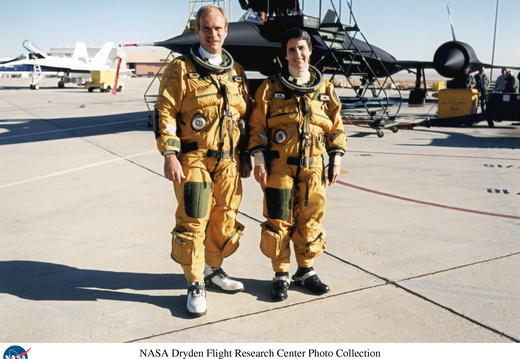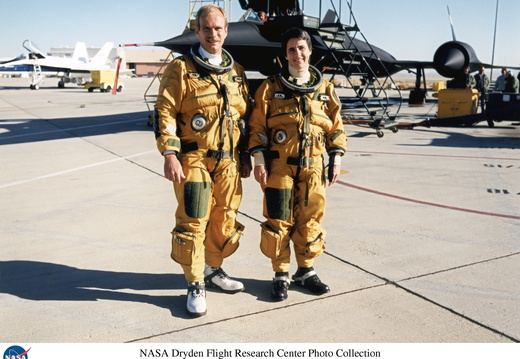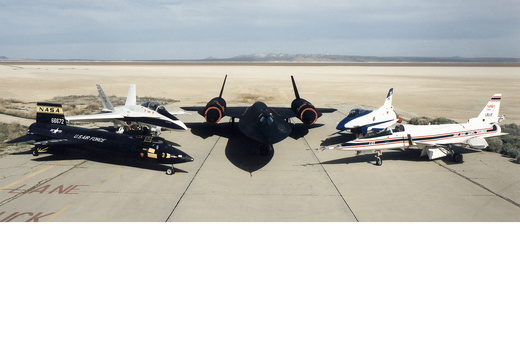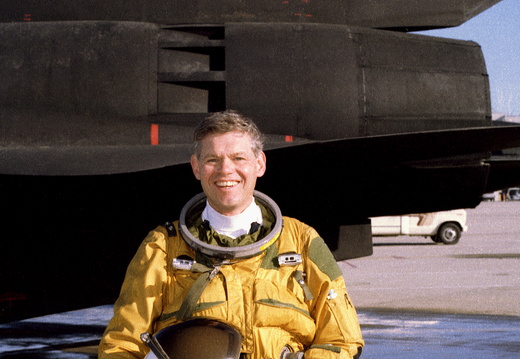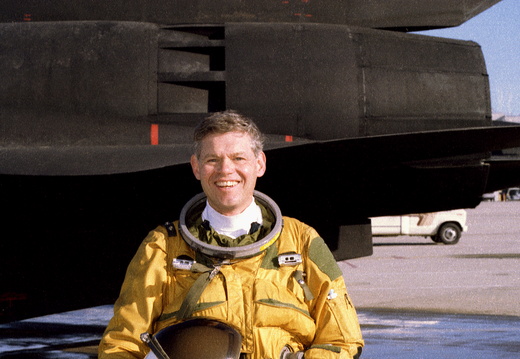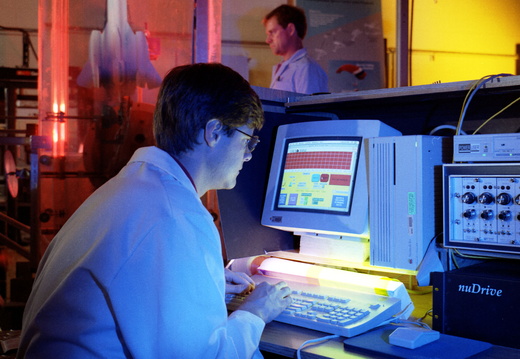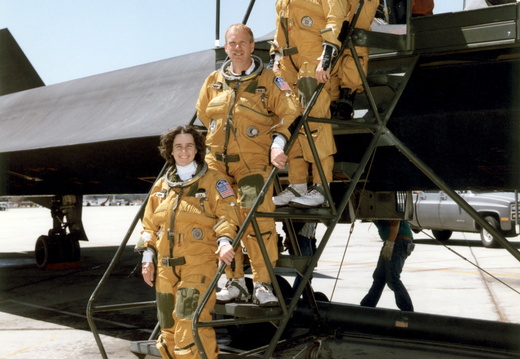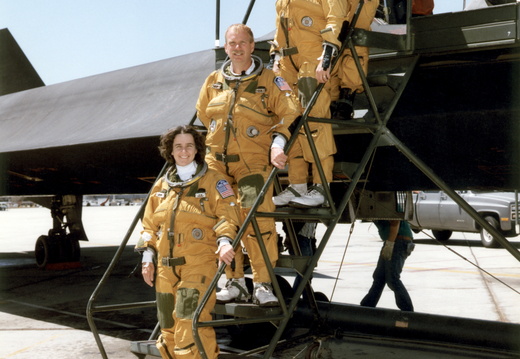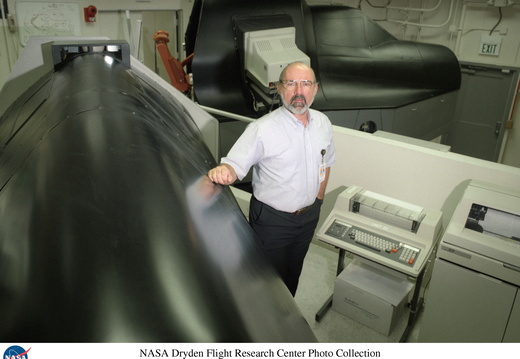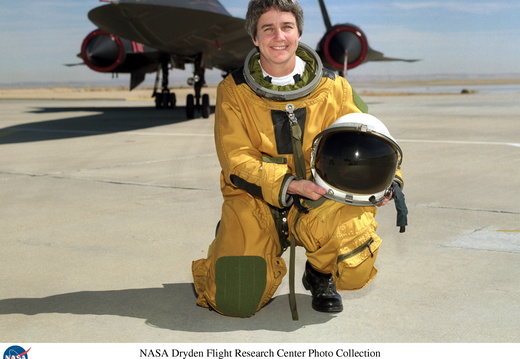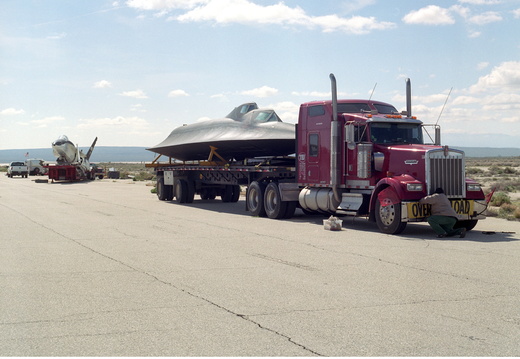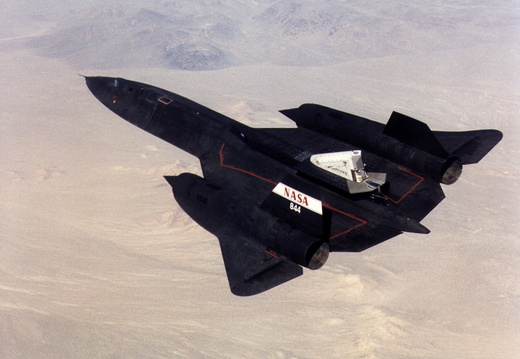
LASRE
The joint NASA, Rocketdyne (now part of Boeing), and Lockheed Martin Linear Aerospike SR-71 Experiment (LASRE) completed seven initial research flights at Dryden Flight Research Center. Two initial flights were used to determine the aerodynamic characteristics of the LASRE apparatus (pod) on the back of the SR-71. Five later flights focused on the experiment itself. Two were used to cycle gaseous helium and liquid nitrogen through the experiment to check its plumbing system for leaks and to test engine operational characteristics. During the other three flights, liquid oxygen was cycled through the engine. Two engine hot-firings were also completed on the ground. A final hot-fire test flight was canceled because of liquid oxygen leaks in the test apparatus.
The LASRE experiment itself was a 20-percent-scale, half-span model of a lifting body shape (X-33) without the fins. It was rotated 90 degrees and equipped with eight thrust cells of an aerospike engine and was mounted on a housing known as the "canoe," which contained the gaseous hydrogen, helium, and instrumentation gear. The model, engine, and canoe together were called a "pod." The experiment focused on determining how a reusable launch vehicle’s engine plume would affect the aerodynamics of its lifting-body shape at specific altitudes and speeds. The interaction of the aerodynamic flow with the engine plume could create drag; design refinements looked at minimizing this interaction. The entire pod was 41 feet in length and weighed 14,300 pounds. The experimental pod was mounted on one of NASA’s SR-71s, which were at that time on loan to NASA from the U.S. Air Force.
Lockheed Martin may use the information gained from the LASRE and X-33 Advanced Technology Demonstrator Projects to develop a potential future reusable launch vehicle. NASA and Lockheed Martin were partners in the X-33 program through a cooperative agreement. The goal of that program was to enable significant reductions in the cost of access to space and to promote creation and delivery of new space services and activities to improve the United States’s economic competitiveness. In March 2001, however, NASA cancelled the X-33 program.
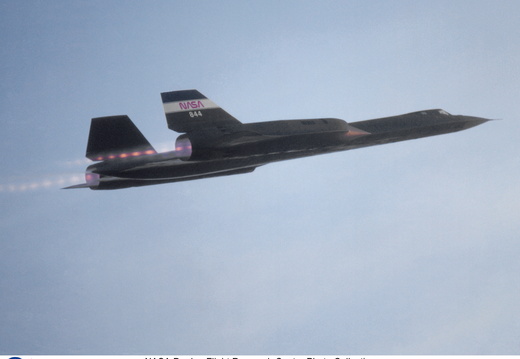
UVE
The SR-71 was proposed as a test bed for the experiment because it is capable of flying at altitudes above 80,000 feet for an extended length of time. Observation of ultraviolet radiation is not possible from the Earth's surface because the atmosphere's ozone layer absorbs UV rays.
Study of UV radiation is important because it is known to cause skin cancer with prolonged exposure. UV radiation is also valuable to study from an astronomical perspective. Satellite study of ultraviolet radiation is very expensive. As a result, the South West Research Institute (SWRI) in Texas developed the hypothesis of using a high-flying aircraft such as the SR-71 to conduct UV observations. The SR-71 is capable of flying above 90 percent of the Earth's atmosphere. The flight program was also designed to test the stability of the aircraft as a test bed for UV observation. A joint flight program was developed between the JPL and NASA's Ames-Dryden Flight Research Facility (redesignated the Dryden Flight Research Center, Edwards, California, in 1994) in conjunction with SWRI to test the hypothesis.
Dryden modified the nosebay of the SR-71, creating an upward-observing window to carry SWRI's ultraviolet CCD camera so it could make observations. According to Dryden's SR-71 Project Manager Dave Lux, a single flight of the aircraft confirmed the aircraft's capability and stability as a test bed for UV observations. SWRI's principle investigator was Dr. Allen Stern.
